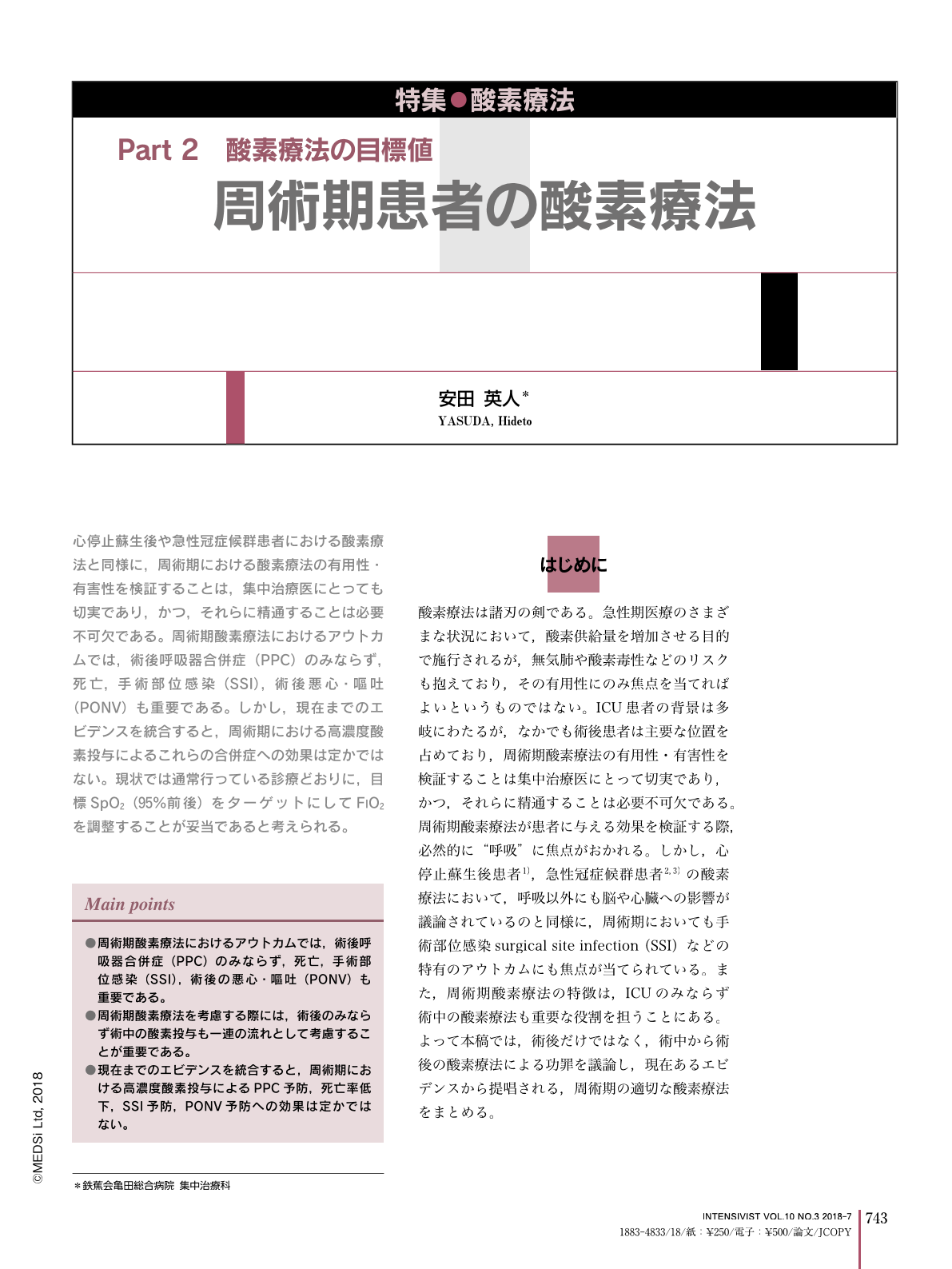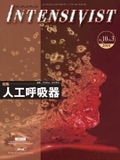Japanese
English
- 有料閲覧
- Abstract 文献概要
- 1ページ目 Look Inside
- 参考文献 Reference
心停止蘇生後や急性冠症候群患者における酸素療法と同様に,周術期における酸素療法の有用性・有害性を検証することは,集中治療医にとっても切実であり,かつ,それらに精通することは必要不可欠である。周術期酸素療法におけるアウトカムでは,術後呼吸器合併症(PPC)のみならず,死亡,手術部位感染(SSI),術後悪心・嘔吐(PONV)も重要である。しかし,現在までのエビデンスを統合すると,周術期における高濃度酸素投与によるこれらの合併症への効果は定かではない。現状では通常行っている診療どおりに,目標SpO2(95%前後)をターゲットにしてFIO2を調整することが妥当であると考えられる。
Main points
●周術期酸素療法におけるアウトカムでは,術後呼吸器合併症(PPC)のみならず,死亡,手術部位感染(SSI),術後の悪心・嘔吐(PONV)も重要である。
●周術期酸素療法を考慮する際には,術後のみならず術中の酸素投与も一連の流れとして考慮することが重要である。
●現在までのエビデンスを統合すると,周術期における高濃度酸素投与によるPPC予防,死亡率低下,SSI予防,PONV予防への効果は定かではない。
As with oxygen therapy for patients with post cardiac arrest syndrome and acute coronary syndrome, it is imperative for intensivists to understand the benefits, risks, and appropriate use of perioperative oxygen therapy. Perioperative oxygen therapy may have a significant impact on the incidence of postoperative pulmonary complications, surgical site infections, postoperative nausea and vomiting, and mortality. Based on a thorough review of the current evidence, the effects of administering or avoiding high concentrations of oxygen on these outcomes have not been established. Currently, the administration of oxygen targeting arterial oxygen saturation around 95%, as most intensivists do, is a reasonable strategy.

Copyright © 2018, MEDICAL SCIENCES INTERNATIONAL, LTD. All rights reserved.


